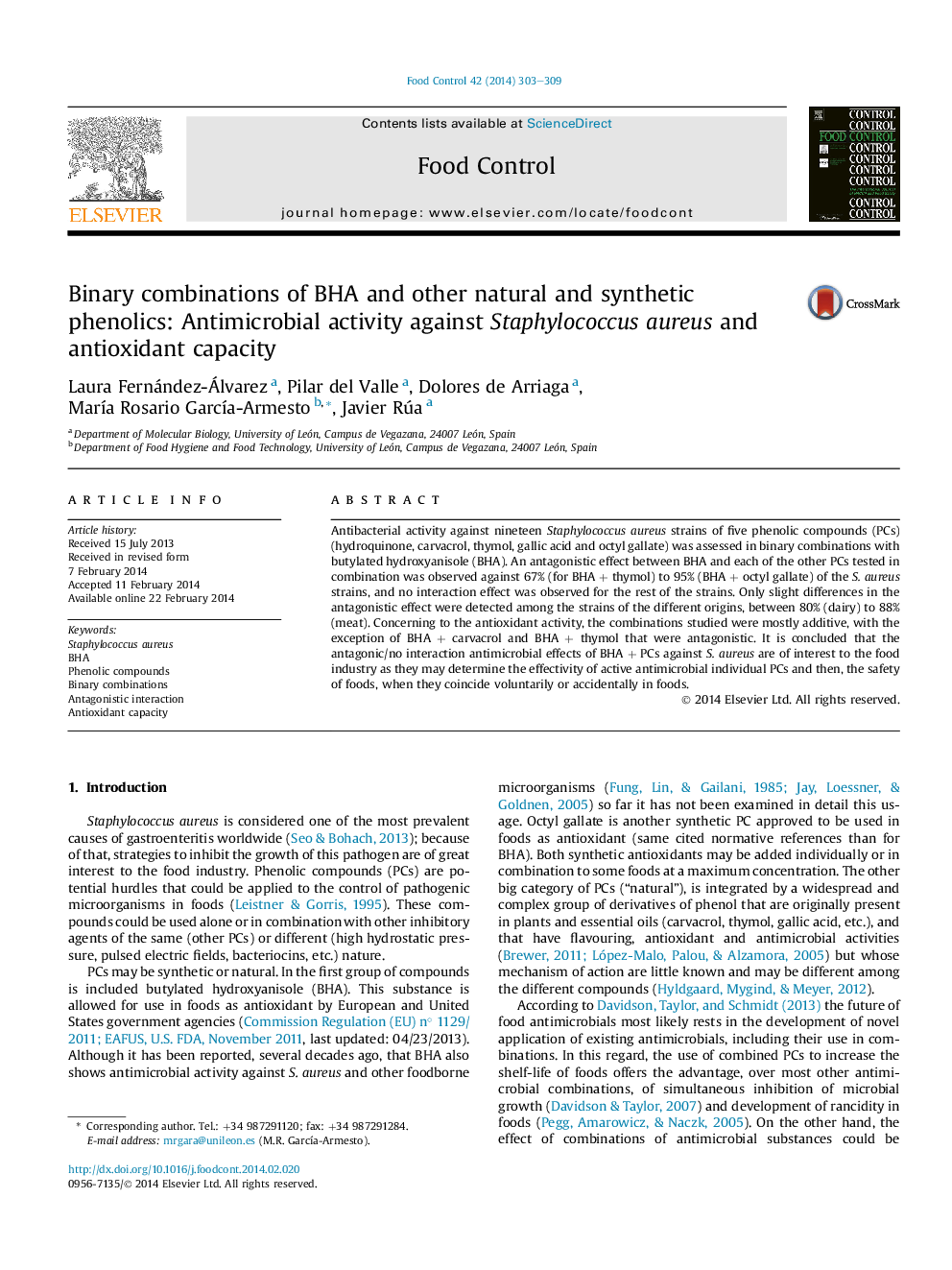| Article ID | Journal | Published Year | Pages | File Type |
|---|---|---|---|---|
| 6391722 | Food Control | 2014 | 7 Pages |
â¢Antagonistic effect between BHA and the other PCs was observed for most S. aureus strains.â¢The strain is a factor that can influence the interaction results, from antagonistic to no interaction effects.â¢Three of the BHA + PC combinations showed an additive antioxidant effect.
Antibacterial activity against nineteen Staphylococcus aureus strains of five phenolic compounds (PCs) (hydroquinone, carvacrol, thymol, gallic acid and octyl gallate) was assessed in binary combinations with butylated hydroxyanisole (BHA). An antagonistic effect between BHA and each of the other PCs tested in combination was observed against 67% (for BHA + thymol) to 95% (BHA + octyl gallate) of the S. aureus strains, and no interaction effect was observed for the rest of the strains. Only slight differences in the antagonistic effect were detected among the strains of the different origins, between 80% (dairy) to 88% (meat). Concerning to the antioxidant activity, the combinations studied were mostly additive, with the exception of BHA + carvacrol and BHA + thymol that were antagonistic. It is concluded that the antagonic/no interaction antimicrobial effects of BHA + PCs against S. aureus are of interest to the food industry as they may determine the effectivity of active antimicrobial individual PCs and then, the safety of foods, when they coincide voluntarily or accidentally in foods.
